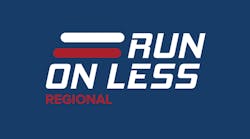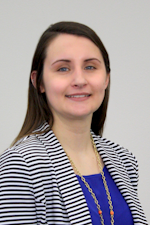Shell, the North American Council for Freight Efficiency (NACFE), and the Rocky Mountain Institute (RMI) recently announced the drivers selected to participate in the second Run on Less Regional event. This event is a fuel efficiency roadshow where the trucks being driven are equipped with various technologies that improve the trucks’ economy.
These experienced drivers are working for C&S Wholesale Grocers, Hirschbach, Hogan Transportation, J.B. Hunt, Meijer, PepsiCo, Ploger Transportation, Schneider, Southeastern Freight Lines, and UPS.
Drivers and equipment include:
Louis Scaruffi, 42 years driving
C&S Wholesale Grocers
2019 Volvo VNR day cab with Volvo D13 engine
Mark Casey, 1 year driving
Hirschbach
2019 Freightliner Cascadia sleeper with Detroit DD15 engine
Glen Williams, 30 years driving
Hogan Transportation
2020 International LT day cab with Cummins X15 engine
Dustin Whitener, 11 years driving
J.B. Hunt
2019 International LT sleeper with Cummins X15 engine
Rita Bare, 20 years driving
Meijer
2019 Freightliner Cascadia with Detroit DD13 engine
Lou Martinez, 14 years driving
PepsiCo
2019 Peterbilt 579 day cab with PACCAR MX-11 engine
Travis Lauer, 4 years driving
Ploger Transportation
2018 Volvo VNR sleeper with Volvo D11 engine
Michael Tam, 2 years driving
Schneider
2019 Freightliner Cascadia sleeper with Detroit DD15 engine
Beau White, 36 years driving
Southeastern Freight Lines
2019 Kenworth T680 day cab with Cummins X15 engine
Darin Salgado, 32 years driving
UPS
2019 Kenworth T680 day cab with Westport 12G engine
To learn more about the drivers and their equipment visit the Run on Less website to view their Meet the Fleet videos.
“The 10 drivers who are participating in Run on Less Regional have shown that fuel efficiency is as important in regional operations as it is in long-haul, over-the-road trucking,” says Mike Roeth, NACFE’s executive director. “We are pleased that these drivers have agreed to participate in the Run to show all of us how they can get great fuel economy despite some of the challenges of regional haul including traffic, multiple stops, construction, et cetera.”
No two trucks will be the same as each fleet will equip its truck with a variety of technologies to meet their goals for fuel efficiency.
Data will be collected from the trucks from October 7-25. The results will then be shared the week of October 28-31 in Atlanta, where the Run will culminate at the North American Commercial Vehicle show.
This year the results dashboard will have some new features that it didn’t previously have in 2017 during the first Run. There will be a daily visual of the Run for each truck showing where it went, where it made stops, and graphs of the speed and topography as well as a little bit about the weather. The dashboard will also have graphs of other important information such as the duration of truck operation on the freeway and the starts of stops of the truck. Payload data will also be collected and shown in various ways, and lastly, a How Things Work page is available on the Run on Less website which gives greater detail on how the event works.
During the three weeks of the Run, NACFE will be hosting one technology day webinar each week where experts will discuss the following industry topics:
- October 8 - Hydrogen: It is a viable truck fuel?
- October 15 - How can connectivity improve trucking efficiency?
- October 23 - How far will commercial battery vehicles go?
Registration for the technology day webinars is open on the Run on Less website.
Overall, with how these fleets are using the latest technologies to move freight and how they think of electric trucks, Roeth says, “We believe these ten fleets are giving us a glimpse into the future.”




